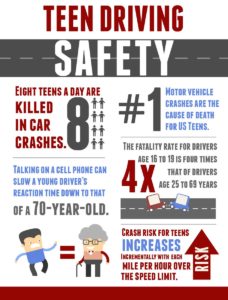Blog
What is the difference between Replacement Cost and Actual Cash Value?
When you first purchase homeowner’s insurance and/or any other type of property insurance, you may have to make a choice between replacement cost option or actual cash value option. When it comes to understanding your homeowner’s/property insurance coverage it can be confusing. The reason it’s confusing is a customer really doesn’t understand the difference between replacement cost and actual cash value.
Most people think their coverage limits on their Declaration Page of their insurance policy is a good indicator as to how much they will be paid at the time of a claim. This isn’t the reality. The coverage limits on the declaration page is the maximum you could possibly be paid, not necessarily how much money you will receive.
What you should know so you understand how much you will get paid during a claim, and the difference between replacement cost and actual cash value coverage.
What is Replacement Cost?
Replacement cost is what it sounds like. It’s the cost of replacing something you own with a brand-new-version for e.g., your TV gets destroyed due to a fire, it’s the cost of buying a comparable model at the store or your couch burns to a crisp due to a house fire, it’s the cost of buying a comparable couch at the furniture store. It is easy to estimate replacement cost. You can look up the same brand and model online and see what it’s selling for at your favorite store.
Figuring out the replacement cost of your home and other buildings can be a little trickier. In calculating the replacement cost it’s the cost of the materials and labor required in order to rebuild the structure. (The value of the land beneath the building has nothing to do with replacement cost). Some polices that include replacement cost will provide money for you and your family to stay in a hotel while your home is being rebuilt.
Don’t confuse home replacement cost with what you paid for your home when you purchase it – replacement cost is what it will cost us to rebuild your home, based upon the cost of the materials, labor and design cost. Real Estate value can vary based upon your neighborhood’s desirability, how hot or stagnant the housing market and a bunch of other big picture factors.
A home’s replacement cost is the cost of rebuilding, pure and simple.
What is Actual Cash Value?
Actual cash value means exactly what it sounds like. It’s the depreciated value of an item of property at the time of the loss, opposed to what it would cost to replace that item with a brand-new-version.
Over time, the value of almost everything declines. Your TV slowly goes on the fritz. That couch slowly burns up. You pay way less for thrift store stuff than brand-new stuff for a reason.
The loss of value over time (called depreciation) can be estimated using math. Using a few different methods, economists and insurance adjusters figure out an item’s actual cash value based on its replacement value, its age and its “salvage value,” or the amount an item could theoretically be sold for at the end of its useful life.
The older something is, the less it’s worth – most of the time.
Certain rare items experience appreciation, or gained value, over time. This is especially true for art, precious metals and gems, firearms, fine jewelry and some antiques.
These items will need special treatment in your insurance policy to make sure their covered for their full value,
How Much Will You Be Paid for Your Claim?
To determine how much you will be paid on your insurance claim depends on three key factors.
- How accurately can you describe, document and show the lost value of your property? Have a home inventory of items (electronics, tools etc., write down serial and model numbers), keep copies of your receipts. The more documentation and proof you provide, the less likely you are to be at the mercy of the insurance company’s estimates.
- There are different types of property insurance policies, e.g., homeowner’s, condo, renters, commercial building, etc.… What type of insurance policy do you have? Depending on the type of policy you have will dictate the risks covered. The policy will cite exclusions and special limits for certain items. Special limits are not standard across all insurance companies. Companies that specialize in high-value homes might have higher special limits in the areas of jewelry, fine arts or even collectibles.
- The basis of claims settlement depends on your policy, how much you can expect from an insurance claim. Will the insurance company pay “actual cash value” or “replacement cost?” People who insure for actual cash value will never receive enough money in a claim to replace the items they lost. You can find the basis of claims settlement in your policy in small print. Homeowners are often disappointed in how they are paid when they don’t understand the meaning of insurance claim terms.
Blog
Auto | Home | Business 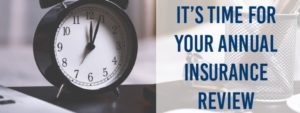
Despite what you may think, an insurance review doesn’t have to be as involved or a time-consuming endeavor. A conversation or a visit with your agent can help make sure you’re knowledgeable about your insurance coverage and comfortable that your limits are meeting your current needs.
When the bill arrives in the mail to pay your insurance premiums, this should prompt a reaction to review your policy. Insurance policies can be changed to accommodate changes in your life or circumstances. Many consumers don’t understand what coverage they have and could be uninsured or paying more than they need in insurance premium. Reviewing your insurance premiums and coverage should be done annually. Failure to do this could result in paying higher premium or a headache down the road.
Home
When your homeowner’s insurance is up for renewal, it’s important to review each piece. Even if you haven’t made any significant developments or improvements to your home, it is possible that other changes have occurred that your insurance agent should know about. Changes in the real estate market may affect the current policy or changes in lifestyle, living situation, or income are all factors to consider when reviewing your homeowner’s policy.
Auto
Auto insurance policies should be reviewed to ensure you have adequate coverage and protection for all drivers. If you have a new driver on your policy, it may be a good time to increase coverage. In addition to adding or changing the vehicles on your policy, it is important to review your driving habits. Are you driving more compared to last year or less? Will you have any upcoming road trips that may require additional coverage? If the value of your car has dipped below $2,500 it may be a good time to remove collision coverage and have liability only. If you take the time to review these aspects each year, it will help save you money and provide you with peace of mind.
Business
When small business owners are focused on the day-to-day activity of a growing business, it can be hard to realize all the small changes occurring that may affect insurance rates. Perhaps you have purchased new equipment, additional vehicles, or developed new products or services. On the other hand, if your business is struggling and has lost money, you may want to lower your policy limit in order to accommodate a reduced value. This will also reduce your premium and save you a little money.
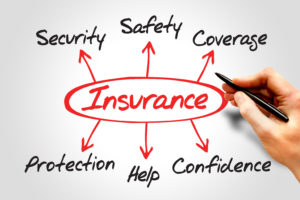
Blog
Snowmobile Safety Tips 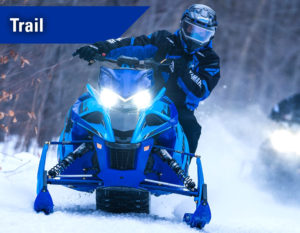
It’s that time of year and winter has arrived, and the snow has begun fall. If you own a snowmobile than you are ready to start riding and enjoying your time on the snowmobile trails. While snowmobiling can be exhilarating experience and fun during the winter season, it can also be a very dangerous if proper safety precautions are not taken. To protect you and keep you safe here are some important snowmobile safety tips.
- Take a snowmobile safety course. Have you taken your safety course? While many states require a snowmobile certificate each state has its own set of rules, laws and regulations. A snowmobile safety course will instruct you on how to ride safely and responsibly, as well as teach you the rules. It is especially essential and helpful for those first-time drivers or riders. You will learn riding techniques that will help you operate the snowmobile and avoid any hazards.
- Check the weather forecast and the trail conditions. Before heading out on the trail it’s always a good idea to check the weather forecast and trail conditions. You do not want to put yourself or someone else in danger if the trail is frozen, the wind chill is too low, or a blizzard with white out conditions is in the forecast. If this is the case, then you should plan your ride for another day. By checking the weather, it helps you select the proper clothing for the day.
- Wear proper cloths and protective gear. Staying warm and dry during your ride is essential to staying safe and making your ride more enjoyable. Wear a snowmobile suit, which consists of a jacket and insulated bibs. Make sure you are dressed in layers under your snowmobile suit. Make sure you stay away from cotton in case it gets wet, if that happens it will freeze and that will not be good. Choose polyester blends to hold moisture away from your body. If you do not have a full-face helmet, make sure you wear goggles or a face shield, socks (NO cotton), waterproof gloves, winter hat, face-mask and winter boots. Always wear a DOT-approved helmet, not only to keep you warm but to protect your head from injury. Make sure children have a helmet that properly fits them.
- Inspect your snowmobile before your ride. Before you hit the trail make sure your snowmobile is running properly. Make sure you have your owner’s manual handy on your ride for extra safety. It’s important to follow the recommended service schedule to keep it maintained and running smoothly. Make sure you check fuel and oil levels, battery, brakes, drive belt, skis, throttle, handlebars, headlights and taillights before your ride. Before you take off on your snowmobile, make sure you allow your snowmobile time to run for at least a minute to warm up.
- Bring a buddy. Riding with a friend or in a group is fun, but also safer, especially on trails you have never taken before. It’s always a good idea to have someone with you in case your snowmobile breaks down or you get into an accident. Make sure you tell a family member or a friend your plans and route for your ride, just in case you get stranded. FYI, cell phones don’t always work in remote areas.
- Carry a first-aid kit, emergency kit and repair kit. It’s essential to carry a basic first-aid kit in snowmobile in case of injury. Your kit should include disinfecting wipes, bandages, hand sanitizer, gauze, adhesive tape and Band-Aids. In addition, carry an emergency kit with waterproof matches, flashlight, compass, map, blanket, water, snacks and a knife. A repair kit should include duct tape, tools, spare belt, tow rope, spark plugs and pry bar.
- Stay Alert. It’s important to be observant and watch for obstacles in your path, such as rocks, fallen trees, barbed wire fences, ditches, open water, other snowmobiles, snowbanks, animals, hikers and skiers.
- Avoid frozen rivers. It’s impossible to gauge the thickness of ice. Ice can easily crack and give way under your snowmobile.
- Do not speed. By driving at a moderate speed, it will help you to react quickly to a situation on the trail and will help you to avoid an accident. Many trails have posted speed limits to follow.
- Stay on the trail. Make sure you stay on the marked trails as they have been groomed for you and are less likely to have any dangerous hazards. Going off the trail could result in accidents as you are treading in unfamiliar territory, and you may also get lost and not be able to find your way back. Many public trails run close to private property. Unless you have received permission from the landowner, stay on the marked trail. Failure to comply may result in a trail being closed to the public in the future. Be a responsible rider by following the posted signs and trail markers.
- Driver should be the age of 16 or older. The American Academy of Pediatrics strongly recommends that children under the age of 16 do not operate a snowmobile. The reason is due to the lack of skills needed to safely operate the vehicle and due to their stature can be easily injured.
- Children under the age of six should never ride as a passenger according to the American Academy of Pediatrics. The snowmobile can ride rough and it takes a strong person to hold on tight, especially for long periods of time. Children under the age of six lack this strength.
- Do not overload your snowmobile. Make sure you review your manufacturer’s guide for the approved number of passengers and also the amount of weight it may be able to carry. Exceeding these maximums either from an additional passenger or heavy gear can increase your chances of an accident or injury.
- Never drink and drive.
It’s the law. Just like driving a vehicle, operating a snowmobile while under the influence can lead to delayed response and you could cause an accident and injury to yourself or someone else.
- Do not pull people on anything behind your snowmobile. Snowmobiles were not designed to pull sleds, skiers or saucers and it’s unsafe.
We hope these snowmobile safety tips lead to a fun and safe riding experience. If you’re looking for snowmobile insurance or shopping for new snowmobile insurance give us a call, we would be happy to quote your snowmobile insurance. We specialize in snowmobile insurance coverage tailored to meet your unique needs. 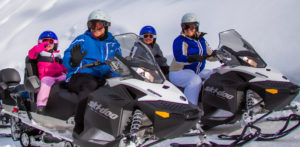
Blog
Commercial property insurance – what’s covered, what’s not covered
Commercial property insurance is meant to help guard the physical assets of your business from specific perils, such as fire, explosions, storms, burst pipes, vandalism, and theft. It protects your building and business personal property, along with fences, signs, and other exterior fixtures. It is a core coverage of your business insurance policy.
If you have commercial property insurance coverage for your business, then you know you are covered for several risks. Did you know that there are common damages that are excluded from your coverage under commercial property insurance policies?
Commercial Automobile Accidents
Commercial property insurance does not cover your company’s vehicles that are used in your daily business. For your company’s vehicles to be covered you need commercial auto insurance. The purpose of commercial auto insurance is to protect you by making sure you are covered for both damage to your vehicles and bodily injury or property damage resulting from an accident caused by a driver.
Flood or Earthquake Damage
Flood and earthquake coverage are excluded from your business insurance policy, as it is with homeowner’s insurance. To protect your company from these risks you need commercial flood insurance or earthquake insurance for your business. If your company is in a flood zone or any prone area for earthquakes, our experienced agent will help you find the best price with the coverage you need.
Equipment Breakdown Coverage
Commercial property insurance protects against damage caused by a covered peril, such as fire, theft, vandalism or explosion. It does not cover damage that has incurred by equipment breakdown or malfunction. Unless equipment breakdown insurance is included in your business insurance package, the cost of repair or replacement will come out of your company’s pocket.
Off-Premises Power Failure
A utility failure, such as an electrical outage or a disruption in water service, could force your business to close for a day or even longer. This type of loss is not covered under your commercial property insurance. You may be able to add off-premises coverage caused by a covered peril resulting in a loss of power as an endorsement to your policy.
Excluded Property Coverage
There are certain types of property that are excluded under a commercial property insurance, including:
- Money, security, accounts, bills
- Land, piers, docks, and wharves
- Vehicles, aircraft, and watercraft (with certain exceptions)
- Animals other than stock
- Crops, hay, or grain located outside
- Cost of excavation, grading, or back-filling
- Building foundations
- Walkways, roads, and other paved surfaces
- Electronic data
- Cost of restoring information on valuable records
Meet with an Agent
One of your responsibilities as a business owner is to ensure you are adequately protected with the right business insurance coverage. Commercial property insurance does not cover everything, it is possible to purchase other coverage to help fill in those gaps. Our experienced insurance agent would be happy to meet with you to review your business insurance policy. We will advise you on the types of insurance coverage you need for your company to be adequately protected and to help you find the right coverage to provide you peace of mind, and affordability.
Blog
Did you know that cooling and heating are the leading causes of home fires and fire injuries? Did you know that November and December are the peak months for fire-related deaths? With the holidays right around the corner and the weather getting colder, now is the perfect time to review and practice fire safety.
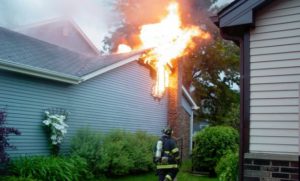
Safety Tips When Cooking:
- Be alert; if you are sleepy or have consumed alcohol, don’t use the oven or stove-top.
- Stay in the kitchen while you are frying, grilling, boiling or broiling food.
- When simmering, baking or roasting, check the food regularly, remain in the kitchen while cooking and use a timer.
- Keep anything that can catch fire away from your stove-top.
Heating is the second leading cause of death. Heating safety tips:
- Keep all flammables, like paper, clothing, bedding, drapes or rugs, at least 3 feet from a space heater, stove or fireplace.
- Never leave portable heaters and fireplaces unattended; turn off heaters and make sure fireplace embers are extinguished before leaving the room.
- If you must use a space heater, place it on a level, nonflammable surface, like ceramic tile, not on a rug or carpet.
- Keep children and pets away from space heaters.
- When buying a space heater, look for models that shut off automatically if the heater falls over.
Other top causes of fire include smoking, electrical problems and candles. To minimize risks:
- Institute a “no smoking” policy in the house.
- Check all cords and replace any that are frayed or have bare wires.
- Switch to flame-less candles.
- Keep matches and lighters high and out of children’s reach in a locked cabinet.
Working Smoke Alarms are a Must
About three out of five deaths happen in homes with no smoke alarms or working smoke alarms. Smoke alarms are a key part of a home fire escape plan providing early warning reducing your risk of dying in a fire.
- Install smoke alarms on every level of your home, inside bedrooms and outside sleeping areas on the ceiling or high on the wall.
- Keep smoke alarms away from the kitchen, at least 10 feet from the stove, to reduce false alarms.
- Use special alarms with strobe lights and bed shakers for people who are hard of hearing or deaf.
- Test smoke alarms monthly.
Create and Practice a Fire Escape Plan
In the event of a fire, remember every second counts, so you and your family must always be prepared. Escape plans help you get out of your home quickly. Twice a year you should practice a home fire escape plan with your family.
Tips to consider when preparing this plan include:
- Find two ways to get out of each room in the event the primary way is blocked by fire or smoke.
- A secondary route might be a window onto a neighboring roof or a collapsible ladder for escape from upper story windows.
- Make sure that windows are not stuck, screens can be taken out quickly, and that security bars can be properly opened.
- Practice feeling your way out of the house in the dark or with your eyes closed.
- Teach children not to hide from firefighters.
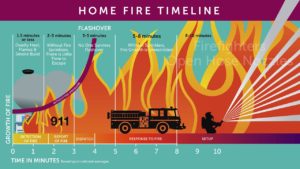
Blog
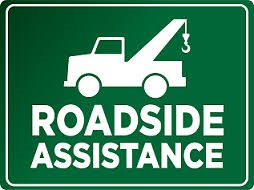
When purchasing you’re auto insurance you may not be sure what coverage you need. One coverage you should not be left without is towing and labor. Did you know that towing and labor is not costly and is worth having?
What is towing and labor?
Towing and Labor is also called “emergency road service.” It’s meant to help you when your broken down or in a bind. Towing and Labor is provided by all auto insurance companies.
Did you know some insurance companies automatically include this coverage in your policy premium? While other insurance companies allow you to add it on your policy.
How can towing and labor help me?
Let’s say you’re cruising down a country back road — no worries in the world, wind blowing through your hair, singing your favorite tune — suddenly, your car sputters, chugs, and slowly… just … stops. Uh-oh. You turn on your hazard lights and pull over to the side of the road. Then you remember (with a sigh of relief) that you’d added towing and labor coverage to your car insurance policy for just-in-case moments like these. You may not know what’s wrong with your car, however you can have peace of mind knowing what’s included in your towing and labor coverage.
There are certain occurrences that are typically covered up to the limits on your policy, regardless of which company you choose; such as:
- Towing (when it’s not related to an accident)
- Locksmith services if you get locked out
- Tire changes and jump starts
- Mechanical labor at the breakdown site
Of course, not all roadside service plans are created equally, so no matter where you buy your coverage, it’s important to ask your licensed agent and/or read the fine print when purchasing your policy.
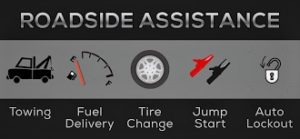
Blog
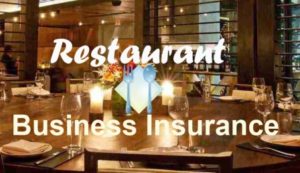
If you own a restaurant or have thought about opening a restaurant, as with any business it takes allot of time and energy, not to mention blood, sweat, and tears, and allot of perseverance in getting it up and running. There are some unique risks involved when it comes to insuring a restaurant. Workers can or will get injured, patrons could get sick, cooling systems may break down, and the list goes on. It’s important to make sure you are adequately protected with business insurance in the event something major happens. Setbacks due to fire, theft or other unexpected life events may be hard to recover from, especially before you’re turning a profit.
The greatest chance of success in the food-service business is to make sure your restaurant can handle a financial loss due to things beyond your control. Here are some tips.
Basic Coverage’s
Business Owner’s Policy provides insurance for your property, liability and loss of income due to a loss on your business.
- Property: Provides coverage for your building (owned or rented, additions or additions in progress and outdoor fixtures). Covers your business personal property for damage or loss, kitchen equipment and inventory, including perishable foods. Commercial property insurance provides reimbursement if a fire damages your kitchen, even if a fire started in another building. It provides coverage for vandalism, theft, and certain types of weather-related damage, such as burst pipes and hail damage.
- Liability:Protects against lawsuits related to a customer’s injury or damage to a customer’s property that happened at your place of business. General liability insurance can help pay for medical expenses, pay for repair or replacement of customer’s property if damaged and help pay for court costs, attorney’s fees, and other legal expense if a customer holds you liable. General liability provides coverage against advertising injuries, including defamation (libel and slander) and accusations of copyright infringement.
- Business interruption: In the event of a loss this coverage will help make up for lost income and pay other related expenses to help you reopen. It covers loss of income due to a fire or other catastrophe that disrupts the operation of your business. It can also include extra expense of operating out of a temporary location.
Other Coverage’s
- Liquor liability:If your bar or restaurant serves alcohol you may be required to purchased liquor liability insurance, it can be added to a business owners’ policy. This coverage protects your business in the event an intoxicated customer injures another customer’s property or causing injury to someone due to consuming too much alcohol at your business.
- Commercial auto insurance:Can cover expenses related to accidents involving a business-owned vehicle. It provides coverage for vehicle theft and vandalism. If your restaurant provides delivery service on a regular basis, make sure you have a commercial auto policy in place.
- Worker’s Compensation:This policy is required in most states for business with one or more employees. It provides coverage for medical expense and partial lost wages if an employee is injured on the job.
- Food spoilage and contamination: Whether it’s due to a malfunctioning refrigerator or a power outage, damage to your stored food can be a big financial loss to your business. This type of coverage will help you recover from the damage. It provides coverage to help reimburse the cost of replacing spoiled frozen or refrigerated food, or shelved perishables. Food contaminated by a supplier or improper handling may also need to be thrown away. Food contamination coverage helps with replacement costs, along with associated cost such as cleaning or advertising to restore your reputation. Food spoilage and contamination coverage can both be added to commercial property insurance on your BOP.
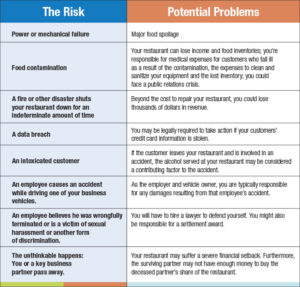
Blog
There is nothing like your home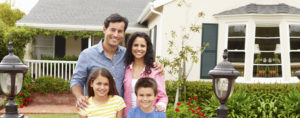
Home, it’s your favorite place to relax after a long day; it’s your sanctuary. It’s where your kids run to after they step off the school bus. It’s a place where you build long lasting memories that have taken place. Your home is where you play, plan and dream with those you love. Therefore, it’s essential you ensure it properly – both inside and out.
Home insurance covers more than disasters
Home insurance isn’t reserved for times of catastrophes such as – fire, tornadoes, and other natural disasters. It can be a welcome sight when your home has been subjected to complete ruin. The hail damage you received to your roof, the broken water heater that flooded your newly finished basement, theft, vandalism, identity theft and more are all items that can be covered under your homeowner’s insurance.
Damage caused by most disaster is covered but there are exceptions. A standard homeowner’s policy does not cover flooding, earthquakes or poor maintenance. Flood Insurance is provided by the federal government’s National Flood Insurance Program, you may purchase this from an insurance agent. Earthquake Insurance is available either in the form of an endorsement or as a separate policy. Most maintenance related problems are the homeowner’s responsibility.
Homeowners insurance policy includes four essential types of coverage
- Coverage for the structure of your home. This part of a policy pays to repair or rebuild your home if damaged or destroyed by fire, hail, lightning or other disaster listed in the policy. It does not cover flood, earthquake or routine wear and tear. Most standard policies also cover structures that are not attached to a house such as a garage, tool shed or gazebo.
- Coverage for personal belongings. Furniture, clothes, and other personal items are covered if stolen or destroyed by fire or other disaster. Most companies provide coverage for 50 to 70 percent of the amount of insurance on the structure of a home. Expensive items like jewelry, furs and silverware are covered, but there are usually dollar limits if they are stolen. To insure these items to their full value, individuals can purchase a special personal property endorsement or floater and insure the item for its appraised value.
- Liability Protection. Covers against lawsuits due to bodily injury or property damage that policyholders or family members cause to other people. It also pays for damage caused by pets. The liability portion of the policy pays for both the cost of defending the policyholder in court and any court awards—up to the limit of the policy. Coverage is not just in the home but extends to anywhere in the world. Liability limits generally start at $100,000. An umbrella or excess liability policy, which provides broader coverage, including claims for libel and slander, as well as higher liability limits, can be added to the policy.
- Additional Living Expense. Pays the additional costs of living away from home if a house is inhabitable due to damage from a fire, storm or other insured disaster. It covers hotel bills, restaurant meals and other living expenses incurred while the home is being rebuilt. Coverage for additional living expenses differs from company to company.
What Home insurance options are available
Lancaster Insurance Center provides the following types of home insurance to meet your specific needs..
- Home Insurance
- Condo / Townhouse Insurance
- Renters Insurance
- Mobile-Home Insurance
- Dwelling Fire / Landlord Insurance
We offer coverage enhancements like replacement cost coverage for your dwelling and contents, guarantee replacement cost, water back up of sewers and drains, ordinance or law, and equipment breakdown.
When it comes to your home, Lancaster Insurance Center is here to help you protect what matters the most. Lancaster Insurance Center will be there for you every step of the way, especially in the event of a claim. We are about helping you protect what matters the most, your family and your home.
Blog
Summer is here and you’re ready to head out on your boat and enjoy some time on the water. Who doesn’t love boating? Boating can be relaxing, 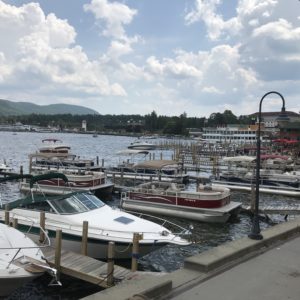 exciting, entertaining and rejuvenating time. Hauling a boat on a trailer and launching it at the busy launch ramp can have it challenges. It can be dauntingly stressful and dangerous, and at times mishaps can occur.
exciting, entertaining and rejuvenating time. Hauling a boat on a trailer and launching it at the busy launch ramp can have it challenges. It can be dauntingly stressful and dangerous, and at times mishaps can occur.
Tips for Boat Trailer Safety
Follow this safety checklist before you haul your boat to your destination and into the water.
- Coupler, hitch and hitch ball are of the same size.
- Coupler and safety chains are safely secured to the hitch of the tow vehicle.
- All fasteners are properly tightened.
- Boat is securely tied down to trailer (winch line is not a tie down).
- Wheel lug nuts are properly adjusted and maintained.
- Load is within maximum load carrying capacity.
- Tires are properly inflated.
- All trailer lighting is working properly.
- Trailer brakes are properly adjusted and working (if trailer is so equipped).
- Brakes and additional equipment meet all local and state requirements.
At Lancaster Insurance Center, we want your boating season to be enjoyable while on the open water, instead of experiencing frustration while on the boat ramp or on the road.
Preventing Accidents
Your boat is finally in the water, here are some tips for an accident free boating experience.
- Life preservers aren’t only for kids. Make sure you have life jackets on board – wear them! When an accident occurs people rarely are wearing them and don’t have enough time to react to grab a life jacket. Not only do the rules apply to children, but adults as well. More people in their 30’s die in boating accidents than any other age group. Life vests have come a long way in style, and you can even pickup a vest for your water-loving dog.
- Watch the back of your boat. Carbon Monoxide kills in minutes. Inform all your passenger where your exhaust pipes are located and turn off your engine when people are on the water, and don’t let passenger “water-ski or teak-surf” by holding on to the back of the boat. Carbon monoxide detectors are standard on most new boats.
- Alcohol and boating don’t mix. More than 50% of drowning results from boating incidents where alcohol is involved. Don’t drink and drive. Not only is drinking and driving illegal in cars, it is as well in boats.
- Care of your boat. When you get ready to head out on the water make sure gas tanks are vented and bilges are free of vapors, oil, waste and grease. Make sure your fire extinguisher is charged. Every year you should have a certified marine technician look over your boats operating system.
- Boating experience matters! Did you know, 70% of all boating accidents occur due to operator errors, according to the U.S. Coast Guard. Don’t just let anyone drive your boat. Make sure they are properly trained. Safety first!
Driving You’re Boat in the Dark
An evening cruise on your boat can be an enjoyable time. Like an evening drive in your car after sundown, it’s imperative you make some adjustments in keeping yourself and others safe.
Here are some tips to safeguard that you will return to shore and enjoy the rest of your evening.
Before You Get on the Boat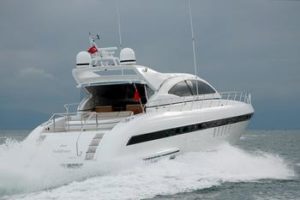
- Know where you’re going. Everything looks different in the dark, stay in an area you are familiar with when you’re on the water at night. Having a GPS device or an old-fashioned compass is good to have to help with navigation.
- Let someone know where you’re going. Provide a “float plan” to a trusted friend or family member. It should include your intended route, boats registration details and description, names of all passengers and when you plan to return. No one will know you’re missing if they don’t know you’re gone.
- Have the right safety equipment. Make sure you have navigation lights that work (test before hand), a horn or other sound-producing device, a radio, a flashlight, flares and fire extinguishers. Make sure everyone has a life jacket.
- Check the weather and your fuel tank. Make sure you have enough fuel in the event you get caught in a storm. It can be very dangerous and troublesome at night if you run out of fuel. Visibility is already troublesome, and the storm will only make things worse. If you’re stranded without fuel, help may take longer to respond.
Once You’re Afloat
- Watch your speed. When on the water at night you can’t see, and there is no indication of other boats or obstacles that may appear suddenly. Take it slow!
- Watch the lights. Know what lights on other boats indicate – now you must look for them. Lights on anchored or drifting boats can be exceptionally difficult to distinguish from lights onshore.
- Avoid distractions – drinking and driving. Don’t drink and drive while operating a boat, it puts you and other people at risk. Your vision is limited at night, sound becomes more important. Remember, a loud stereo could drown out the horn of an approaching boat.
- Remember, it’s not only you out on the water. There could be other vessels or boats on the water such as, commercial ships to kayaks; depending where you are at. Remember to obey the right-of-way rules and keep your distance and courteous when passing others. It’s open water and there is plenty of room for everyone, if you keep an eye out for each other.
Blog
Educating Teen Drivers
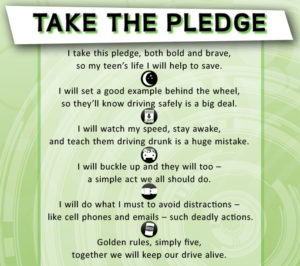
As a parent we worry about our teen driving and it’s our job to educate them on the rules and laws of safe driving. Before your teen hits the road set these “5 to Drive” rules.
- No Cell phones while driving
- No extra passengers
- No speeding
- No alcohol
- No driving or riding without a seat belt
Continue to practice driving with your teen even after they obtain their drivers license. The more you practice driving with your teen the more experience they will have behind the wheel and will reduce the likelihood of an accident. The reason there are so many accidents with teen drivers is due to inexperience driving. Teen drivers struggle with judging gaps in traffic, driving the right speed for conditions and turning safely, among other things.
Facts
- In 2016 there were 2,433 teens ranging in age between 16-19 that were killed. There were 292,742 teens treated in emergency departments for injuries suffered in a motor vehicle crash.
- Motor vehicle crashes are the leading cause of death for U.S. teens? Every day 1 in 8 teens ranging in ages 16 – 19 are killed in a motor vehicle accident.
- Teen drivers between the ages of 16 to 19 are more likely to be in a fatal crash compared to 20 and older adult.
- 16-year-olds have higher crash rates than drivers of any other age.
- Half of all teens will be involved in a car accident before they graduate high school.
Statistics 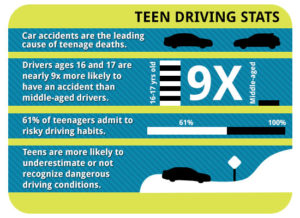
- 56% of teens have said they talk on the phone while driving. Talking on a cell phone can double the likelihood of an accident as well as slow the teen’s reaction time down to that of a 70-year-old.
- 53% of teen deaths occur from auto crashes between Friday and Saturday and weekend prime time. Teen crash fatalities occur between 9 a.m. an 12 a.m. in general.
- 32% of teen driver fatalities is contributed to speeding.
- 20% of fatal car crashes involving teenager’s alcohol was a factor.
- 47% of teen driver killed in car accident weren’t wearing a seat belt.
- Statistics show that 16 and 17-year old driver death rates increase with each additional passenger.
- 1 in 5 of 16- year old drivers will have an accident within their first year of driving.
- 16- to 17-year old drivers are nine times more likely to be involved in a crash than adults and six times more likely to be involved in a fatal crash than adults.
What can we do as a parent?
- Set a good example. Your behavior is greatly influenced by your teen when it comes to driving. Practice safe driving habits yourself, especially when your teen is in the car with you. Refrain from talking on the cell phone, speeding, disobeying traffic signs and unsafe driving behaviors. Set the example for your teen when it comes to driving. What message do you want to send your teen?
- Talk to your teen about the driving risks. Share statistics regarding teenage driving fatalities and the risk factors that contribute to them. Talk to your teen about the danger of drug and alcohol use while driving under the influence and tell them it’s against the law. Let your teen know the impact and ramifications it will have on them.
- Continue to practice driving with your teen. Your teen passed their permit and road test. This does not mean they are an experienced driver. Parents should continue to practice safe driving with their teen. This is a great way to spend time together while helping them improve on their driving skills.
